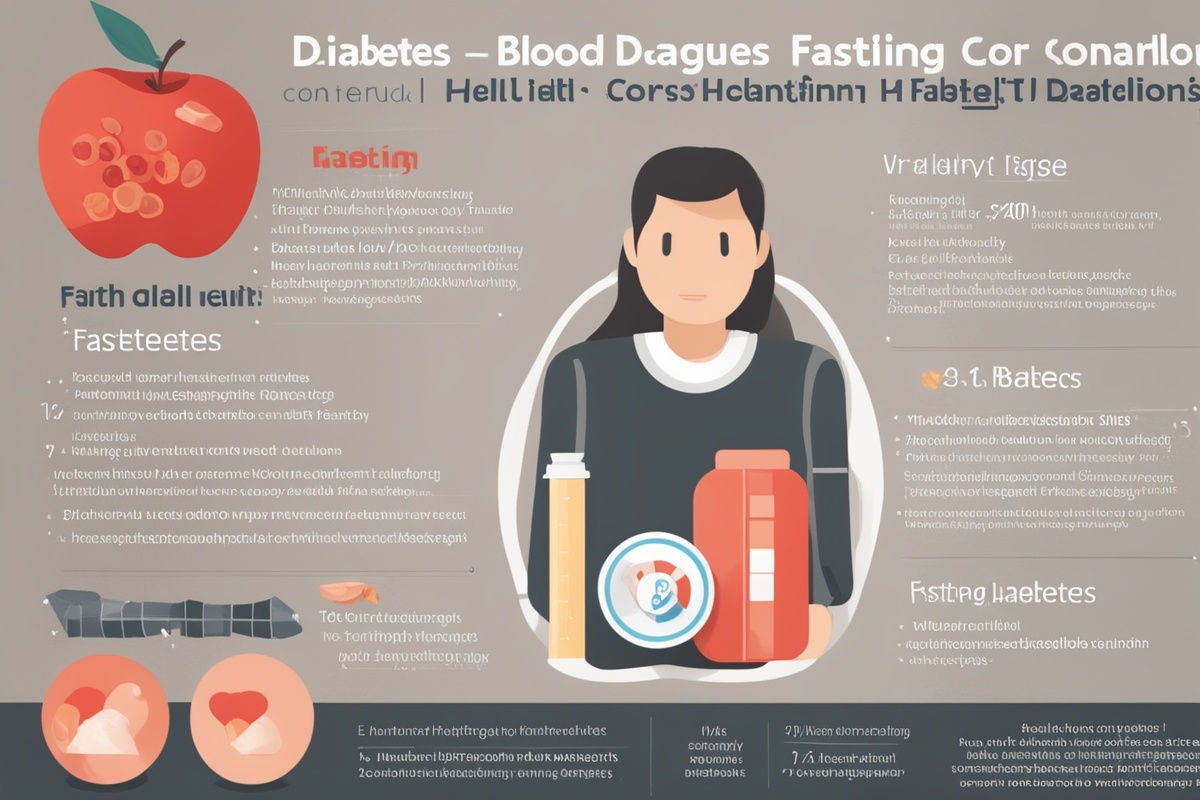Diabetes is a chronic condition affecting millions worldwide, and managing it effectively can feel like a daily balancing act. One of the most critical aspects of diabetes care is controlling your fasting blood sugar levels—the glucose reading taken after an overnight fast. Whether you’re exploring intermittent fasting for health benefits or simply aiming to stabilize your blood sugar, understanding how fasting and diabetes management intersect can be a game-changer. In this post, we’ll dive into practical strategies, backed by science, to help you take charge of your health. Let’s explore how to optimize your blood sugar control and improve your quality of life with actionable tips tailored for a fasting-focused lifestyle.
What Is fasting Blood Sugar and Why Does It Matter?
Your fasting blood sugar level is a key indicator of how well your body manages glucose after a period of not eating, typically overnight. For most people, a normal fasting blood glucose level ranges between 70 and 99 mg/dL. Levels above this may signal prediabetes or diabetes, making it a crucial metric to monitor. Elevated fasting glucose can lead to long-term complications like heart disease, nerve damage, and kidney issues if left unchecked. By focusing on blood sugar regulation through diet and lifestyle, you can prevent spikes and maintain stability, even when incorporating fasting into your routine.
The Role of Fasting in Diabetes Management
Intermittent fasting, which involves cycling between periods of eating and fasting, has gained popularity for its potential to improve insulin sensitivity and support fasting blood sugar control. Research shows that fasting can help reduce insulin resistance—a hallmark of type 2 diabetes—by giving your body a break from constant glucose processing. However, fasting isn’t a one-size-fits-all solution. For those with diabetes, it’s essential to approach fasting cautiously and under medical supervision to avoid hypoglycemia (low blood sugar) or other risks. When done correctly, fasting can be a powerful tool for managing diabetes and stabilizing glucose levels.
Practical Tips for Controlling Fasting Blood Sugar
Managing your fasting blood sugar doesn’t have to be complicated. With a few intentional changes, you can see significant improvements. Here are some practical strategies to incorporate into your daily routine, whether you’re fasting or not:
- Monitor Regularly: Use a glucometer to check your fasting glucose levels each morning. Tracking trends helps you understand how food, stress, and fasting impact your numbers.
- Stay Hydrated: Dehydration can cause blood sugar to rise, so drink plenty of water, especially during fasting windows.
- Choose Low-Glycemic Foods: When breaking a fast, opt for whole grains, vegetables, and lean proteins to prevent rapid glucose spikes.
- Time Your Meals: Eating your last meal at least 2–3 hours before bedtime can help stabilize overnight blood sugar levels.
Dietary Strategies to Support Blood Sugar Regulation
Your diet plays a pivotal role in fasting blood sugar management. While fasting can help reset your metabolism, what you eat during your eating windows is just as important. Focus on nutrient-dense foods that promote steady glucose levels and avoid processed carbs or sugary snacks. Pairing fasting with a balanced diet can amplify benefits for diabetes control. Here are some dietary tips to keep in mind:
- Prioritize Fiber: Foods like oats, chia seeds, and leafy greens slow glucose absorption, helping with blood sugar stability.
- Limit Refined Sugars: Avoid sodas, candies, and desserts that cause rapid spikes in blood glucose.
- Include Healthy Fats: Avocados, nuts, and olive oil can improve insulin sensitivity and keep you full during fasting periods.
- Control Portions: Even healthy foods can raise blood sugar if overeaten, so be mindful of serving sizes.
- Plan Balanced Meals: Combine protein, fat, and carbs in every meal to maintain steady energy and glucose levels.
Lifestyle Habits to Enhance Fasting Blood Sugar Control
Beyond diet and fasting, your overall lifestyle significantly impacts fasting blood sugar levels. Small, consistent habits can make a big difference in how your body handles glucose. Stress, sleep, and physical activity all play a role in blood sugar management. For instance, chronic stress raises cortisol levels, which can increase blood glucose, while poor sleep disrupts insulin regulation. Incorporating movement into your day, even during fasting periods, can help your cells use glucose more efficiently. Aim for a holistic approach by addressing these factors alongside fasting protocols.
Working with Healthcare Professionals for Safe Fasting
While fasting can offer benefits for fasting blood sugar control, it’s not without risks, especially for those with diabetes. Hypoglycemia, dehydration, and medication timing are real concerns that require careful planning. Always consult your doctor or a certified dietitian before starting any fasting regimen, particularly if you’re on insulin or other glucose-lowering medications. They can help adjust your treatment plan to align with fasting goals and ensure you’re monitoring your blood glucose levels effectively. Personalized guidance is key to balancing the benefits of fasting with safety, making it a sustainable part of your diabetes management strategy.
In conclusion, mastering fasting blood sugar control is a cornerstone of effective diabetes management, and integrating fasting into your routine can offer unique benefits when done thoughtfully. By understanding your glucose levels, adopting a balanced diet, embracing supportive lifestyle habits, and seeking professional guidance, you can take control of your health with confidence. Remember, managing diabetes is a journey, not a sprint. Start small, stay consistent, and celebrate every step toward better blood sugar regulation. Whether you’re new to fasting or a seasoned pro, these strategies can help you thrive while keeping your health a top priority. What’s one change you’ll make today to support your diabetes goals? Let us know in the comments!






